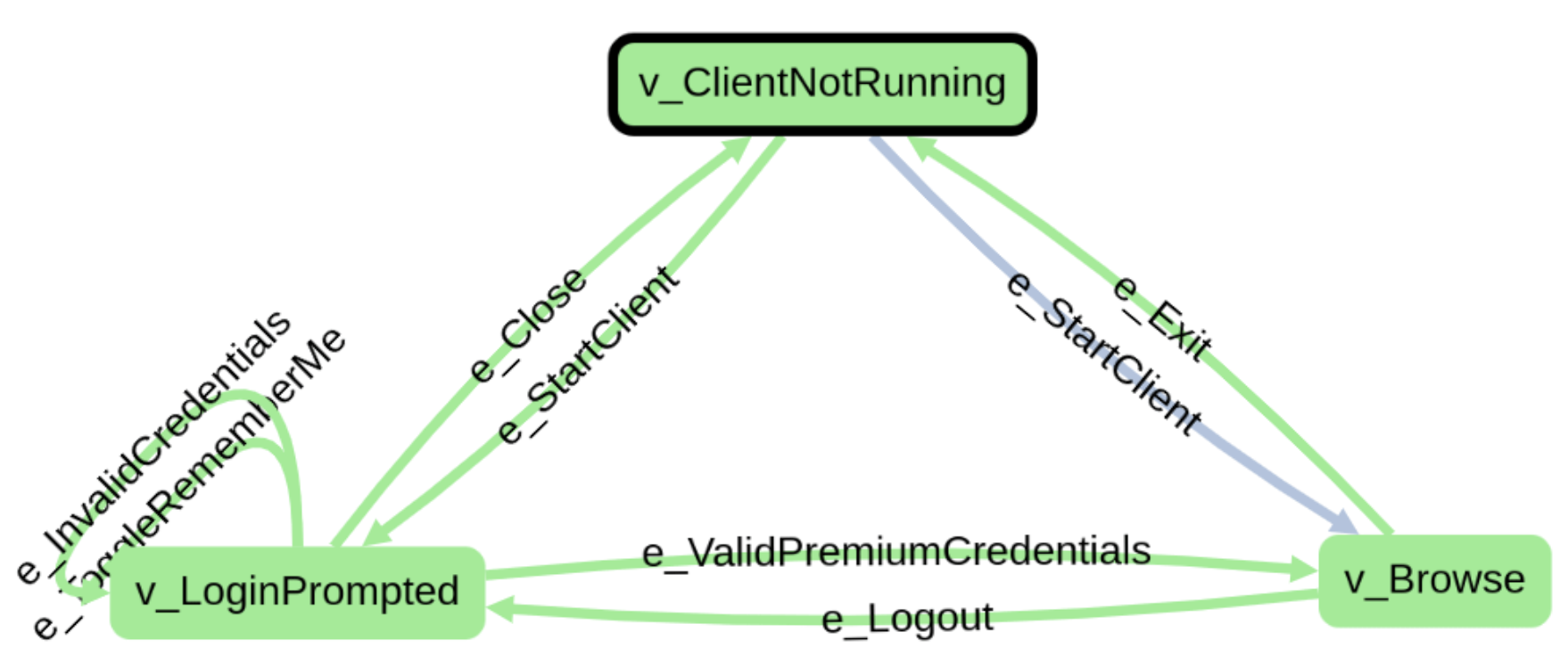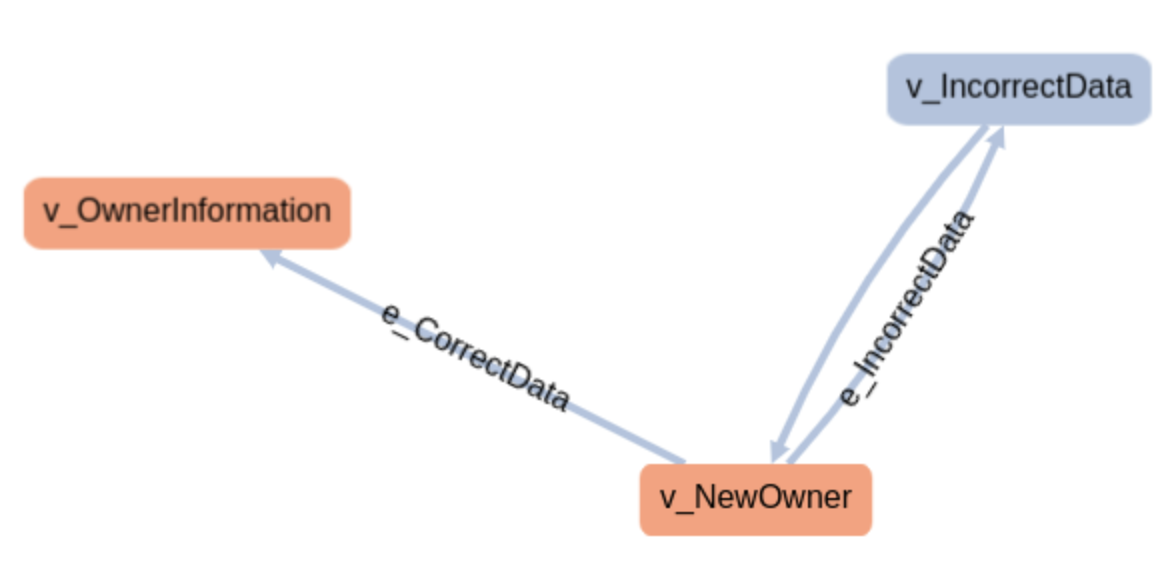Page History
| Table of Contents |
|---|
Overview
GraphWalker is a tool that addresses State Transitioning Transition Model-Based Testing; in other words, it allows you to perform modeling around states and transitions between those states using directed graphs.
Starting by clarifing some key concepts, using the information provided by GraphWalker's documentation that explains them clearly:
...
To build the model, we can use a visual tool and (GraphWalker Studio) and export it to a JSON file.
Mapping concepts to Xray
Tests
Besides other entities, in Xray we have Test issues and "requirements" (i.e. issues that can be covered with Tests).
...
The straighforward approach is to consider each model a Test. Remember that a model in itself is a test idea, something that you want to validate; therefore, this seems a good fit.
Requirements
What about "requirements"?
Well, even though GraphWalker allows you to assign one or more requirement identifiers to each vertex, it may not be the best suitable approach linking our model (or parts of it) to requirements. Therefore, and since we consider the model as a Test, we can eventually link each model to a "requirement" later on in Jira.
Results
In sequential scripted automated tests/checkes, we look at the expectaction(s) using assert(s) statement(s), after we perform a set of well-known and static actions. Therefore, we can clearly say that the test scenario exercised by that test either passed or failed.
In MBT, especially in the case of State Transition Model-Based Testing, we start from a given vertex. But then the path, that describes the sequence of edges and vertices visited, can be quite different each time the tool generates it. Besides, the stop condition is not composed by one or more well-known and fixed expectations; it's based on some more graph/model related criteria.
When we "execute the model", it will keep transversing/walking the path and performing checks in the vertices. If those checks are successful until the stop condition(s) is achived, we can say that it was successful; otherwise, the model failed.
Example
In this tutorial, we'll use GraphWalker e-commerce PetClinic example which uses the well-known PetClinic sample site.
...
| Info | ||
|---|---|---|
| ||
| Remember that you could model it completely differently; modeling represents a perspective. |
Let's pick the NewOwner model as an example.
v_NewOwner represents, accordingly to what we've defined for our model, being on the "New Owner" page.
If we fill correct data (i.e. using the edge "e_CorrectData"), we'll be redirected to a page showing the owner information.
Otherwise, if we fill incorrect data (i.e. using the edge "e_IncorrectData") an error will be shown and the user keeps on the "New Owner" page.
The Java class that implements the edges and vertices of this model is defined in the class NewOwnerTest. Actions performed in the edges are quite simple. Assertions are also simple as they're only focused on the state/vertex they are at.
| Code Block | ||||||
|---|---|---|---|---|---|---|
| ||||||
package com.company.modelimplementations; import com.company.NewOwner; import com.github.javafaker.Faker; import org.graphwalker.core.machine.ExecutionContext; import org.graphwalker.java.annotation.GraphWalker; import org.openqa.selenium.By; import static com.codeborne.selenide.Condition.text; import static com.codeborne.selenide.Condition.visible; import static com.codeborne.selenide.Selenide.$; import static com.codeborne.selenide.Selenide.$x; /** * Implements the model (and interface) NewOwnerSharedState * The default path generator is Random Path. * Stop condition is 100% coverage of all edges. */ @GraphWalker(value = "random(edge_coverage(100))") public class NewOwnerTest extends ExecutionContext implements NewOwner { @Override public void v_OwnerInformation() { $(By.tagName("h2")).shouldHave(text("Owner Information")); $x("/html/body/div/table[last()]/tbody/tr/td[2]/img").shouldBe(visible); } @Override public void e_CorrectData() { fillOwnerData(); $(By.id("telephone")).sendKeys(String.valueOf(new Faker().number().digits(10))); $("button[type=\"submit\"]").click(); } @Override public void e_IncorrectData() { fillOwnerData(); $(By.id("telephone")).sendKeys(String.valueOf(new Faker().number().digits(20))); $("button[type=\"submit\"]").click(); } @Override public void v_IncorrectData() { $(By.cssSelector("div.control-group.error > div.controls > span.help-inline")) .shouldHave(text("numeric value out of bounds (<10 digits>.<0 digits> expected)")); } @Override public void v_NewOwner() { $(By.tagName("h2")).shouldHave(text("New Owner")); $x("/html/body/table/tbody/tr/td[2]/img").shouldBe(visible); } private void fillOwnerData() { $(By.id("firstName")).clear(); $(By.id("firstName")).sendKeys(new Faker().name().firstName()); $(By.id("lastName")).clear(); $(By.id("lastName")).sendKeys(new Faker().name().lastName()); $(By.id("address")).clear(); $(By.id("address")).sendKeys(new Faker().address().fullAddress()); $(By.id("city")).clear(); $(By.id("city")).sendKeys(new Faker().address().city()); $(By.id("telephone")).clear(); } } |
To run the tests we can use Maven.
| Code Block | ||||
|---|---|---|---|---|
| ||||
mvn graphwalker:test |
This will produce a single JUnit XML report, with one testcase element per each model.
Tips
- use MBT not to replace existing test scripts but in cases where yoou need to provide greater coverage
- discuss the model(s) with the team and the ones that can be most useful for your use case
- after importing the results
References
- GraphWalker
- GraphWalker documentation pages
- GraphWalker e-commerce site (Java example)
- Actions and Guards (from AltkWalker's documentation)

